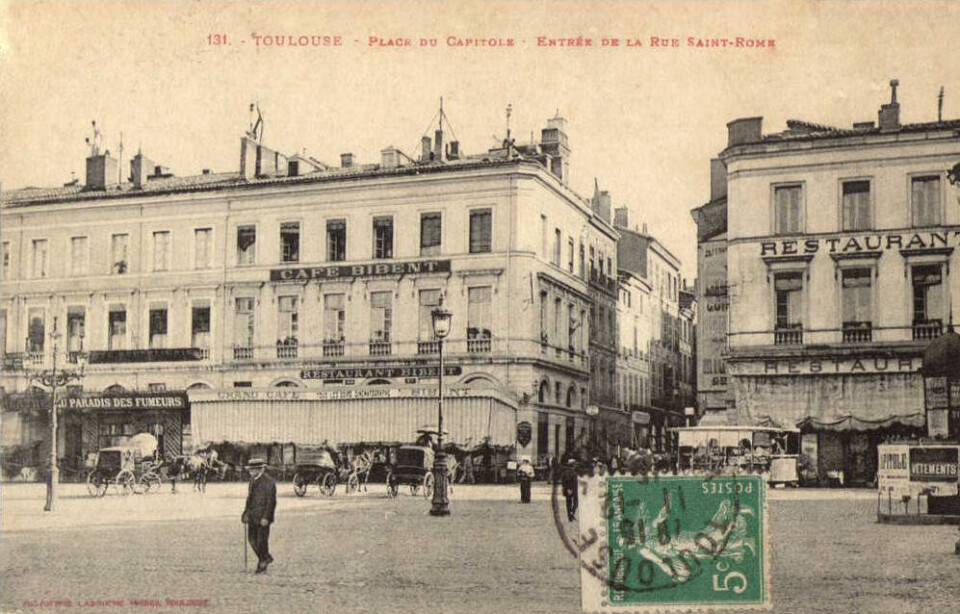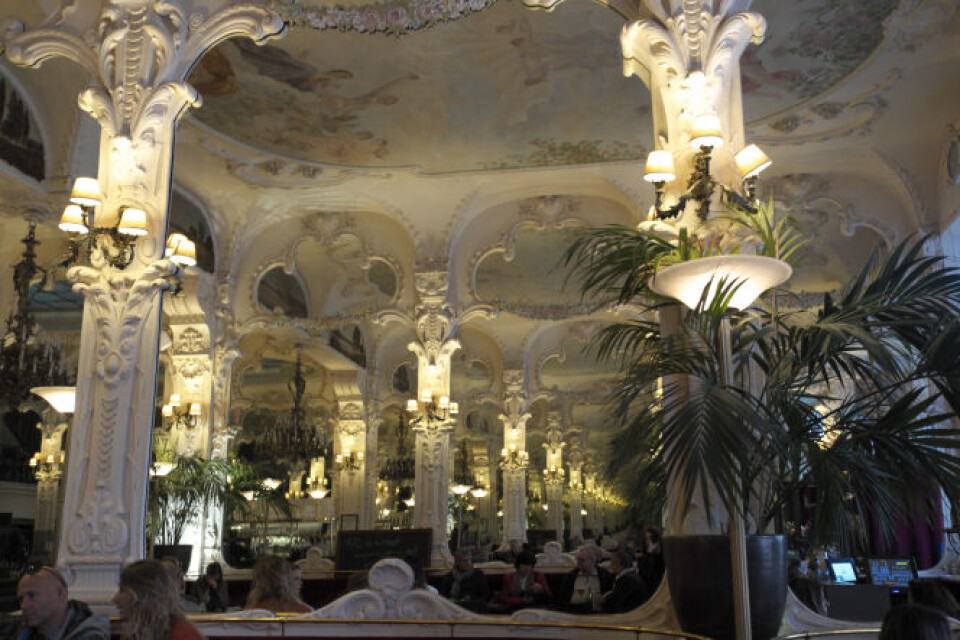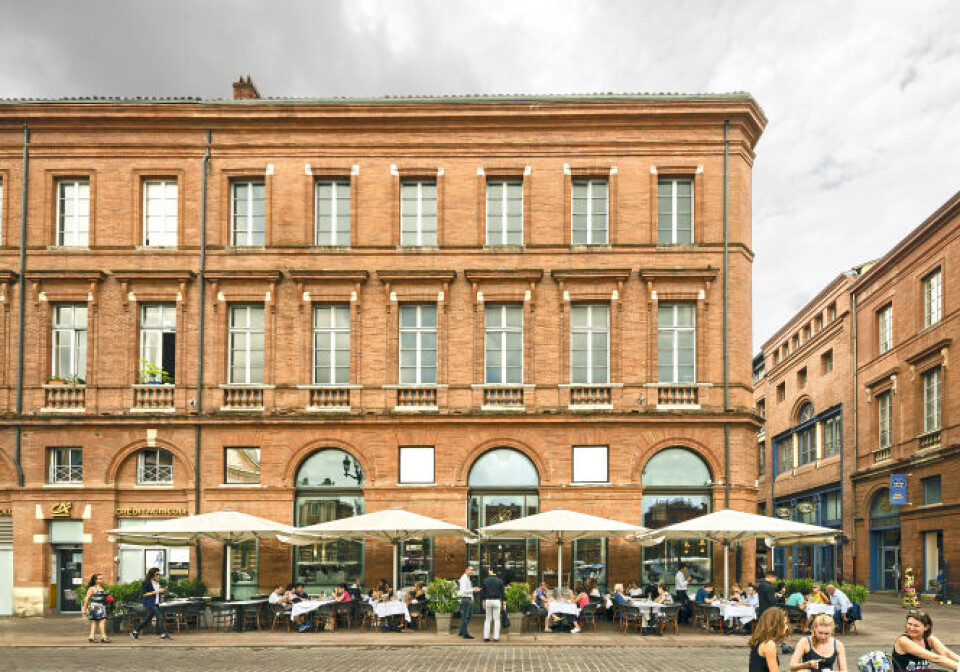-
Photos: 94 chateaux open their doors to visitors in Dordogne
The fifth Chateaux en Fête festival offers a chance to look around many impressive properties that are usually private
-
Martel: the medieval French town home to a 'truffle' train and lavender festival
The small town in the Lot offered refuge to an English throne heir until his death
-
Brittany lighthouse lens removal leads to public outcry
A petition gained over 20,000 signatures, highlighting the ongoing battle over the buildings' heritage in France
Assassination plots, Coco Chanel: Tales of two French ‘grands cafes’
In her series on the cultural history of France, art historian Julia Faiers separates fact from fiction at two iconic nineteenth-century cafés in Moulins and Toulouse

The first cafés opened in Paris in the 1660s, inspired by the coffeehouses of England and the Ottoman Empire, and quickly spread to become part of public life throughout France.
The exact origins of these original coffee houses, mostly long disappeared, are shrouded in mystery.
The histories of the legendary ‘grands cafés’ of the nineteenth century, many of which are protected ‘Monuments Historiques,’ sometimes border on the mythical.
It seems that every bustling café with glittering chandeliers and dapper waiters has a story to tell about its foundations, its famous clientèle and the scandals that unfolded within its mirrored walls.
Paris is frequently regarded as the nucleus of traditional café life in France, but there are countless gems to discover beyond the capital.
The Grand Café in central Moulins transports clients back to a golden age of cafés. Built in 1898, it still wears much of its original fin-de-siècle decoration – all stucco pilasters, ironwork, stained glass and painted ceilings.

And that’s without mentioning the mirrors. The Grand Café’s infinity mirrors, set in ornate stucco frames, have mesmerised visitors for more than a hundred years. The fashion icon Coco Chanel is one such person, said to have gained her diminutive moniker while attending an outdoor ‘cinema’ viewing hosted by the Grand Café as a young seamstress at a local mercerie. Would she have built a global brand if she had stuck with her given name, Gabrielle? Unlikely.
Regularly named as one of the finest cafés in France, the Grand Café on place d’Allier was built when central Moulins was enjoying rapid population growth, like many towns during the Second Empire.

In 1898, a former waiter of the Parisian brasserie Lipp, called Renou, invested 250,000 francs in a new café for central Moulins. He called upon a local architect to decorate his new venture in a spectacular, modern style that drew in the bon viveurs of the Belle Epoque.
Legend has it that Renou took to parking his automobile in front of the café to attract customers. At this time, his vehicle was one of only 300 in France and thus something of a novelty.
Visitors can still enjoy a coffee under the frothy Rococo painted ceiling by Auguste Sauroy, a local artist who had made his name in 1894 painting the ceiling of Moulins’ brand new theatre.
The origins of Toulouse’s iconic café Le Bibent are also somewhat murky. The city archives confirm that Le Bibent has occupied its prime location at 5, place du Capitole opposite the neoclassical Hôtel de Ville since 1843, when Jean-Catherine Bibent opened its doors for the first time.
Madame Bibent handed over to her son around 1870. But Bibent’s claim to fame was that its proprietors brought all the way from Paris new patented technology for a machine with a compressed air system.
In 1861, Le Bibent was the first café in Toulouse to offer a beer ‘à la pression.’
Iconic socialist leader Jean Jaurès wrote his first article for Midi paper
‘La Dépêche’ in 1887 from the terrace of Le Bibent, its interior decorated in the painted stucco style of Napoleon III. Local hero Jaurès would go on to defend his vision for a secular, republican society over twenty years in more than a thousand articles for the paper.
Like Coco Chanel’s encounters with early cinematography in Moulins, Toulousains were among the first to enjoy this exciting new technology from the comfort of their table at Le Bibent. In conjunction with l’American Cosmograph, a cinema recently established next to the place du Capitole, the café began projecting film in its back room every evening from 1907.
The anecdotes that declare this café’s leading role in shaping the social history of France took a sinister turn in the second decade of the twentieth century. Three Serbian dissidents – members of the revolutionary groups Young Bosnia and The Black Hand – are said to have devised plans over drinks on the terrace of Le Bibent to assassinate Archduke Franz Ferdinand of Austria in Sarajevo, an act that was the catalyst for World War One.

While this particular nugget should be taken with a large pinch of salt (historians know that the revolutionaries met in Toulouse, but not where they drank), we can be more confident that Le Bibent provided a beautiful backdrop for people from every walk of life to debate, chat or just watch the world go by.
In recent months, as this café and countless others around the country have been able to re-open their doors to customers, we can all appreciate anew the simple joy of drinking a coffee among friends and strangers in a public place.
Related story:
Marseille: The cultural melting pot of France’s south
This French village sits between heaven and earth
La Fronde: France’s first newspaper run entirely by women
























